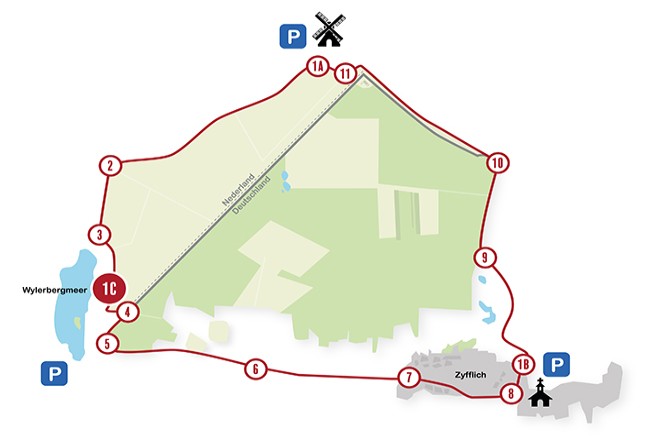Front line
During the last World War, the area on and around the Duivelsberg, the Wylerbergmeer, the Querdamm and the Thornsche windmill, was the scene of some very intense events.
The main German line of defence in the west was situated along two defensive lines, the Siegfried line / Westwall and the Rhine. As a result of operation Market Garden on the 17th of September 1944, the allied forces had hoped to break through these lines of defence and enter Germany to end the war before Christmas 1944. There hopes were quashed because they were not able to take hold of the Rijnbrug near Arnhem.
At the beginning of winter, it was not advisable to take further offensive actions and both sides dug in for a period of stationary war. In our region, the front was stabilised for more than 5 months on the Groesbeek, Wylermeer, Thornsche windmill, Erlecom line. Despite the stabilisation during this period, there was by no means a break in combat. Reconnaissance patrols were deployed continuously by both sides to determine the enemy's location, reinforcements and combat strength.
On the 8th of February 1945, this region was an important point in the great attack on Rhineland. By blowing up the dikes, the two lines of defence, the Siegfried line / Westwall and Rhine, were extended with a completely flooded Ooijpolder and Duffelt. However, a section of the Siegfried Line / Westwall was no longer functional as a result of the amphibious combat vehicles that were able to cross the trenches and reinforcements with ease.



![The map shows the boundary course and the front course with the minefields from Lake Wylermeer over the Querdamm and along Erlecom to the Waal. Hand-drawn map of an aerial view of Zyfflich showing the border between Germany and the Netherlands. The front is marked. Caption:“Kaart der Gemeente Ubbergen“ [Dutch for: “Map of the municipality of Ubbergen”]](/media/basis/img/bilder_paneelen/1c_1/FRONTLIJN_1944_1c_3_copy_header_picture.jpg)




